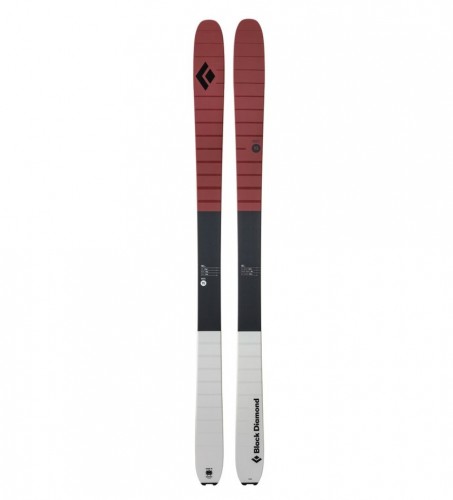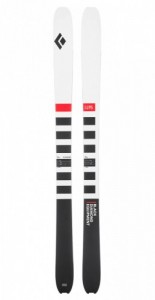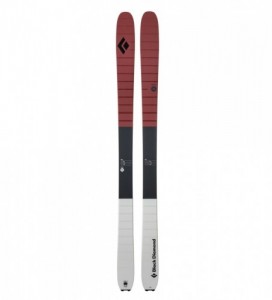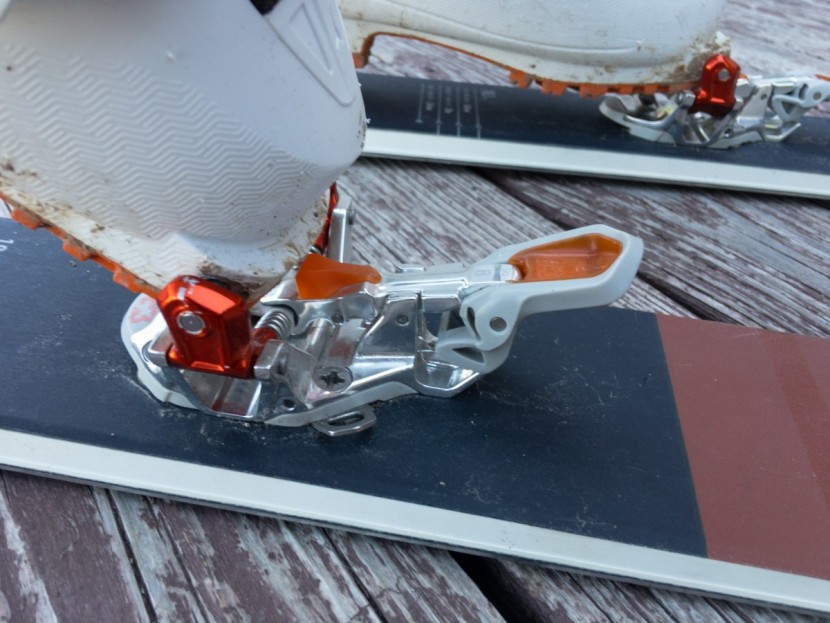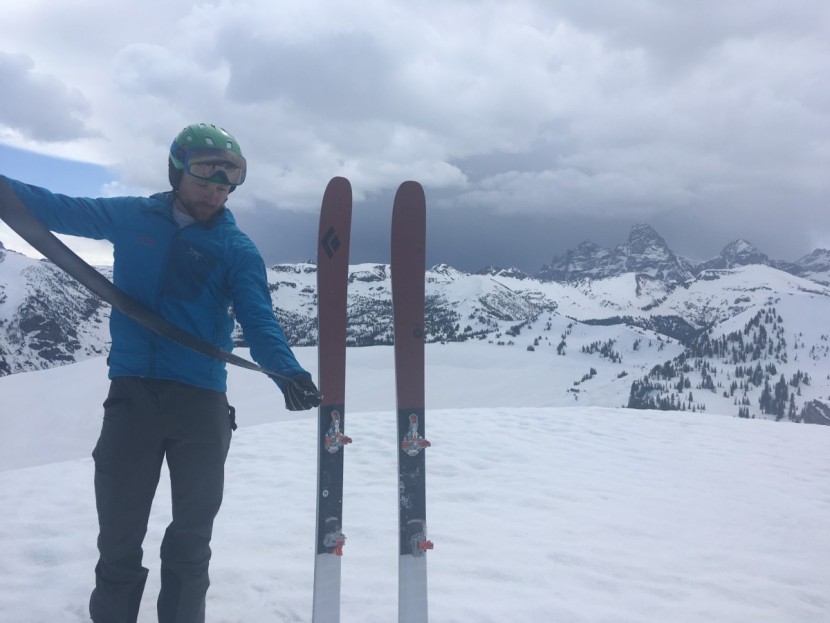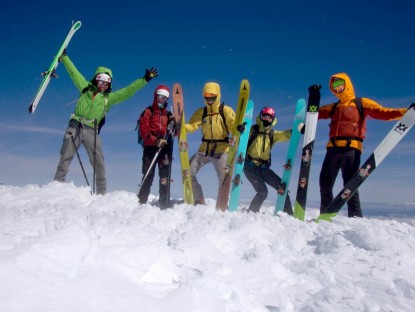Black Diamond replaced the Route 95 with the new Helio Recon 95 ski. Details and comparison photos below.
November 2019Black Diamond Route 95 Review
Our Verdict
Our Analysis and Test Results
New Helio Recon 95 vs. Route 95
The Route 95 is replaced by the Helio Recon 95 ski. These skis are nearly identical save for the fact that the dampening technology has been changed. Rubber was added to the top of the sidewall, a design meant to allow the ski to handle variable terrain better. There are some fresh graphics, as well. The new ski, the Helio Recon 95, is pictured first, followed by the Route 95 that we tested.
We're linking to the Helio Recon 95 ski above, but, as we haven't tested it, the review below still tells our account of the Route 95.
Hands-On Review of the Route 95
Black Diamond's description of the Route 95 mentions “durability” several times. Touring skis aren't usually marketed this way. Our interpretation of this is that it is a way of explaining the weight. These are heavy skis to be considered touring specialists. For the weight, we wish they skied downhill better. We had no such issues with our test pair, but other users report online that the top sheet chips more readily than others. For the weight, other skis go downhill much better, and we have assessed other products that ski as well at a much, much lower weight. The best news about the Route 95 is that it is inexpensive to begin with and can be found even more deeply discounted and widely available.
Weight
A pair of skis pushing 7.5 pounds for the pair is also pushing toward the mass of light all-mountain resort skis. These are heavy touring skis. Most users will find the mass fatiguing at the end of medium to long days, as compared to using a lighter kit. When we correct for width in our “surface area to weight” calculation, the Route 95 stands out even more. Our Top Pick ultralight ski selection is less than 2/3 the mass of the Route 95. Many excellent skis are 75-90% the weight of the Route 95.
Stability at Speed
These things hold up at speed. The soft longitudinal flex rides up and over and straight through inconsistencies while torsional rigidity holds things on track. In that cliche “hand flex test”, these are among the softest skis we tested. One would expect deflection and wobbling at speed from this alone. However, the mass and torsional stiffness hold things on track.
Firm Snow
While the Route 95 wasn't the best ice rider, it did well enough to call it an “all-around” ski. It grabs ice way better than specialized soft-snow tools but is less tenacious than the best all-rounders. On firm snow, you will notice that the tail feels soft. It takes some adjustment, but our test team didn't find it overwhelmingly distracting.
Powder
With a centered, balanced stance, accomplished skiers will have their Route 95 skis, making short and long powder turns with grins all around. The versatility in turn radius and easy float of the Route 95 can be attributed to that soft longitudinal flex. On a spectacular powder day on Wyoming's Taylor Mountain, his first turns on this model of ski, our lead test editor adjusted instantly to the centered style required of the Route 95. When testing skis in the backcountry, it is a real drag to have to burn up a good run adjusting to a new product. That this amazing 3000-foot powder run was enjoyable from turn one is a testament to the predictable and versatile fresh snow performance of the Route 95.
Crud/Poor Snow
Our experience, in tough snow, with the Route 95 is yet another cautionary tale about relying on any one or two construction attributes in assessing skis. It is ubiquitous in ski reviews to connect one or two construction attributes (currently, camber/rocker geometry is trendy) to a given performance experience; this is hogwash. There are so many exceptions to every ski construction “rule” that the rules are moot. When you look at the catalog copy, specs, and hand tests on the Route 95, you'd expect a crud master. These are heavy and rockered.
These things are, generally, associated with good poor snow performance. However, the breakable crust and slop performance of the Route 95 is nothing special, and your average skier will resort to survival techniques in average breakable crust. Notably, our testers found that the Route 95 seemed to “have no backseat”. The tail just feels real soft. Get off balance, to the rear, and the tails wash right out on you. The good news is that they don't grab, but the bad news is that they don't grab. Balancing this out, though, is that mass. The weight of the Route 95 pushes them through tough stuff in a rather unsophisticated, but functional, fashion.
Value
Initial “MSRP” of the Route 95 is nothing special, but you can often find them deeply discounted. When discounted, the all-around performance is good enough. Note, though, that these are heavy skis.
Conclusion
These are solid, if bland and heavy, backcountry skis. The high weight and mediocre downhill performance (in comparison - remember that we purchase and test only proven, excellent products. Our final testing and comparison includes only the cream of the crop) mean that the overall ranking of the Route 95 suffers. When you consider value, though, these will catch your eye and should hold your attention, maybe holding that attention through a final purchase.


